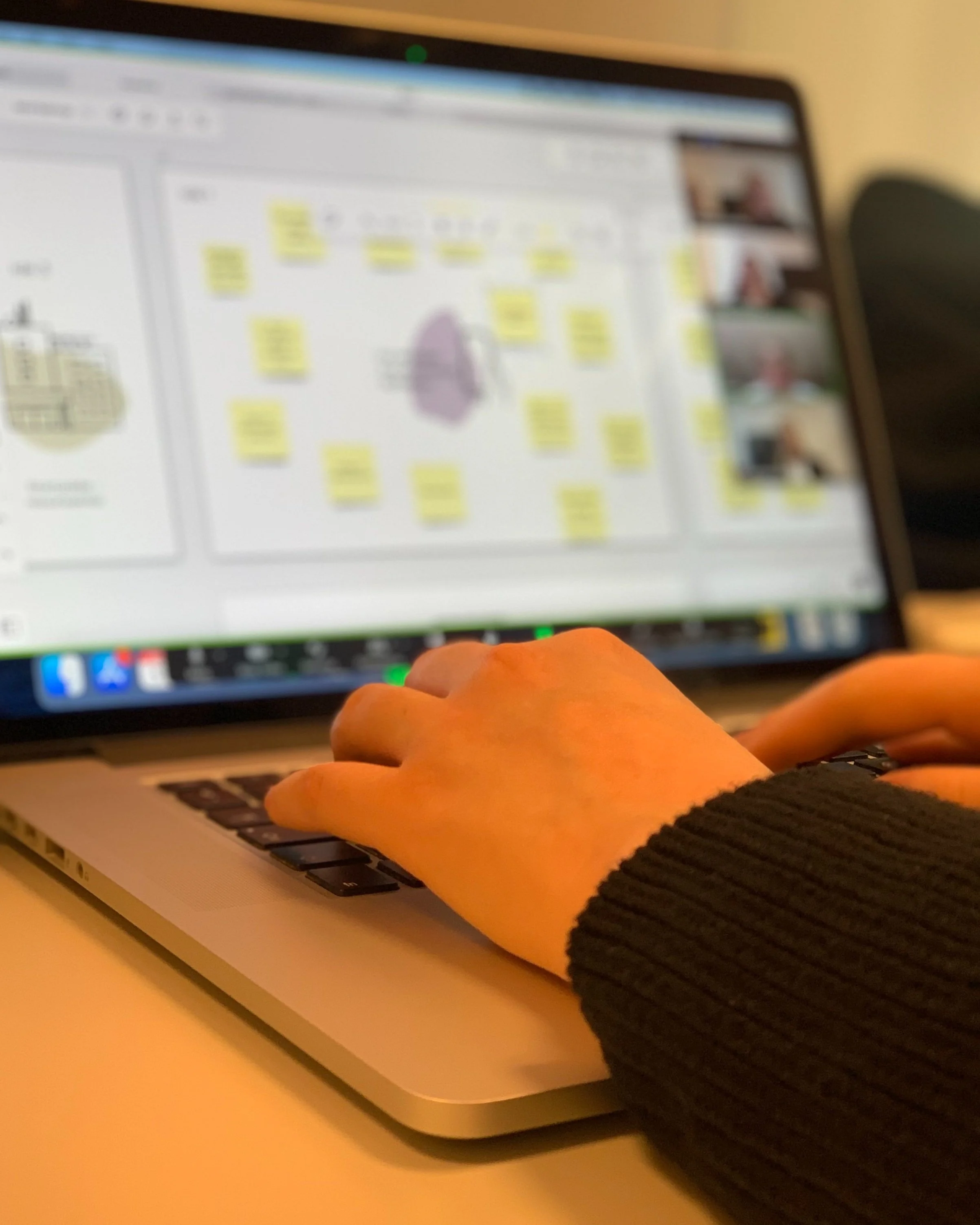
Master project: Færd
A digital service to change the user experience for people who experience gender incongruence
Intent In a subject earlier in the fall semester, another student and I mapped out systems around people with the diagnosis of gender incongruence, who are people who experience being a different gender than what they were given at birth (also called trans gendered people). The preliminary project for the master's thesis revealed that the offer of treatment for gender incongruence nationally was an interaction point that affected most primary user experiences, in addition to that many trans people can spend decades in the health system. The pre-project also showed that there are different views regarding the current treatments, how it is today, and how it should be.
In January 2022, two fellow students and I started our master's project with a systemic view of the Norwegian health care system, the treatment people with gender incongruence are offered and their user experience regarding this. Our intent was to make a change in the existing user experience as transgendered in the Norwegian health system, and hopefully, also impact health care takes user experience meeting this patient group.
Project information
OsloMet
5 months
Group project
Focus on user experience, minority stress, social sustainability, intersectionality, human-centered- and service design.
Research The majority of the research in this project has been out in the field (or on Zoom) talking to patients, private practitioners, health care stations, the public health system, user organizations, transactivists, and front figures. Through semi-structured interviews, live mapping, surveys, probes, and desk research we gathered insights to get a holistic picture of the users within this complex system.
In 2020 a considerable change in the criteria for the diagnosis of gender incongruence was made and contributed to a growing disagreement in the professional community concerning transgender people. We uncovered that these disagreements lead to dissatisfaction among the user group as well as distrust of the treatment offered in a patient group with tendencies of high mental illness.
In addition to this our main finds through the research also main find can be summed up in four points:
lack of trust in the health system
communication outwards to patients
referral and communication flow in the health system
long waiting lists and insufficient overview of the treatment offer.
Process The insight resulted in three concepts: digital service, a contact person, and a starter package for new regional resource centers. Throughout the project, we wanted the result to be based on co-design and human-centered design, and we have consciously included the users in every step of the process. Our main focus has been our primary user group, however, it was also important to include the point of view of the secondary user groups such as private practitioners, health care centers, and so on. An important guideline in the master has been a quote by Tim Brown (IDEO):
“It’s not ‘us versus them’ or even ‘us on behalf of them.’
For a design thinker it has to be ‘us with them”.
To accomplish this we modified a method called iterative focus groups where we digitally brainstormed live with the user groups around the ideas, including functions the user group communicated that was needed.
After discussions around the potential of the concepts combined with the insight gathered from the iterative focus groups our choice fell on a digital service, an app, for the final product.
Design The digital service Færd is an app designed to meet the users’ needs through information, documentation, and reflection. Færd changes the user experience by facilitating for the primary user receives simple, neutral information as well as giving the user the tools to document and reflect on their own user journey. The application also serves as a communicative tool between patients and the healthcare system.
Afterthought This project has in several ways been very special, and it would have been nothing without the insights and stories of our informants. There are certain aspects about the app that needs to be researched further, especially GPDR around confidential patient information. I believe our research question: How can a digital service contribute to the treatment process for people who experience gender incongruence becoming more understandable, informative, and user-oriented? has been answered through a user-centered design perspective, listening to the users and designing for their needs.
Starting the master thesis after the preliminary project we had a vision of designing a complete turnaround on the existing system. A valuable insight has been to not interfere with “right/wrong” in other disciplines but to understand how design can intervene in systems and other professions. In this case, design provided a holistic perspective of the system, and made it possible to understand the needs of the primary user group. We as designers did not have health professional competence, however, we might still create an intervention that has added value to the health care system as we hope Færd can contribute with.
User journey through the eyes of fictive Leo using Færd.















